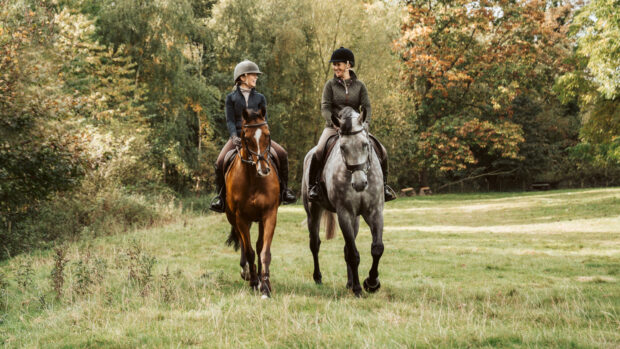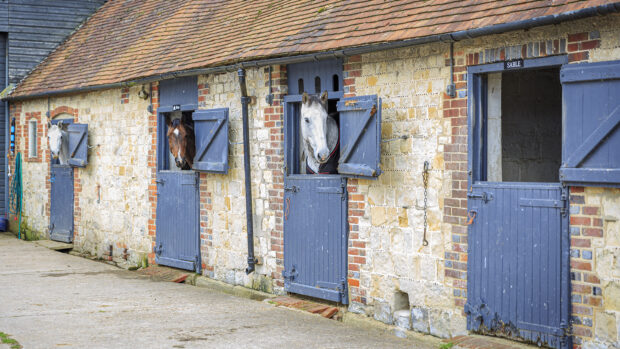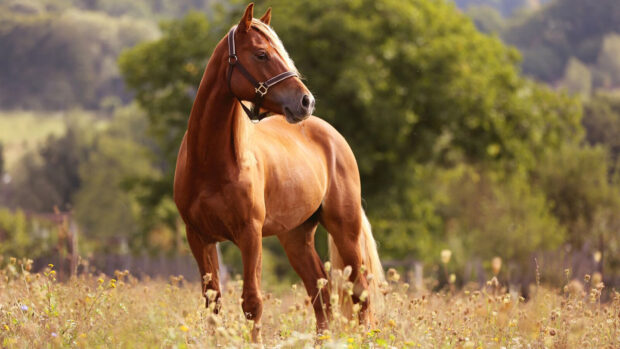Olympian Scott Brash is at the top of international showjumping.
He is also very successful at producing his own horses, taking raw youngsters from novice to grade A. Below Scott discusses some of the general principles he has applied to ensure his young horses get the best education to set them up for the rest of their careers:
My success has been down to the support of my dad, Stanley Brash, my owners, sponsors, staff and of course the good young horses I have been lucky enough to produce. I hope my experiences will help assist other horse owners in training their young novices. Every horse is different but some general principles have helped me bring some good young horses up through the rankings.
I aim to break all my young horses in when they are aged 3. When they master the basics of walk, trot and canter along with a bit of pole work, we turn them away until the end of their 4-year-old year.
Every horse is different and may require less or more time at this stage to master the basic aids, therefore it is key to determine each horse’s individual needs. I also believe it is important not to do too much when horses are young because they are still developing and too much stress can limit their jumping lifespan, especially if these horses go on to reach the top level. At the same time horses have to go out and see the world and at a young age they learn faster, so a happy medium is required.
In order for me to stay at the top level I find myself travelling a lot with the more experienced horses so my stable jockey, Kelly Fitzgerald, is key to my young horse’s development. Once my horses are back in from the field as late 4-year-olds, it is her role to spend a lot of time schooling and educating them to get them to the required level at the appropriate stage in their career.
It is essential to get the young horses going well on the flat before doing anything else. Once they are balanced and working in a good rhythm and outline, we move on to pole work, building up to a course of poles that we like them to canter round on a nice level rhythm. Of course you aren’t going to get things perfect right away but this would be our aim.
First shows
Once they are confident with the pole work, we would build up the course of poles gradually to jumps. When this is achieved we would bring in some fillers and change the course around. We would want them jumping around different courses comfortably and confidently before we go out to their first show.
When we think it’s time for the horse’s first outing, we would pick a centre, probably on a week night when it is quieter, and take them clear round jumping. I prefer to do this rather than going into a British novice class, because usually the practice rings are quieter, which I think is important for a horse’s first outing. It is easy to upset a young horse in a busy practice ring and it is important to be able to maintain the confidence of your young horse from the word go.
The main aim on a horse’s first outing would be to get them in the ring and get them to complete the course. You shouldn’t expect your horse to go out straight away and jump clear rounds, even if they are doing so at home. It is important to remember that everything is new and it is a stressful night for them.
We then aim to take the same horses to the same show the next week and follow the same routine. All I look for at this stage is an improvement from the horse and this might be as simple as the horse being more settled and listening more. In between the shows I would work on the horse’s weaknesses and use grid work to improve their strength and athleticism.
Once the horse has mastered the clear round and the worries of being at a show, it is time for affiliated classes and getting them out to the Scottish centres. Once this is going well the target for the now late 5-year-old, young 6-year-old is to get four newcomers double clears and qualify for the regional finals.
Although the development of your young horse is reliant on its ability and attitude, the management from you is key regardless of what level you are competing at.
Apart from the horse’s work programme, feeding is an essential part to your young horse’s success. If they do not feel fit in themselves they will never perform to their full potential. An essential part of my young horse’s diet is a supplement that I feed called Equitop Myoplast. This is designed to maintain muscle function in horses, and while key for young horses during training, I also use it in my older horses and for our breeding horses where it has great results. I recommend this to all my owners and the people I train.
Find out more
Visit the website: www.equitop-myoplast.co.uk
Further information available from Boehringer Ingelheim Vetmedica, Bracknell, Berkshire, RG12 8YS, UK.
Tel: +44 (0)1344 746959.
Email: vetmedica.uk@boehringer-ingelheim.com.
Date of preparation: September 09. AHD 6114




